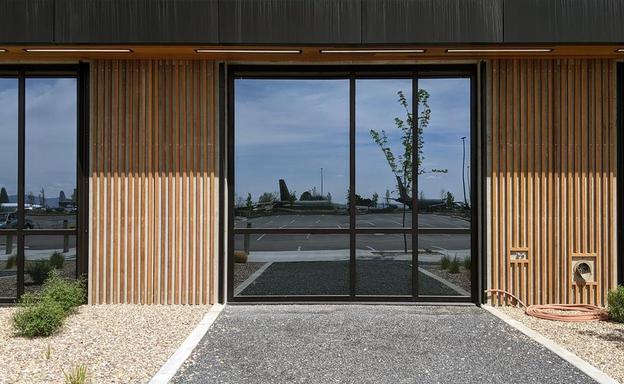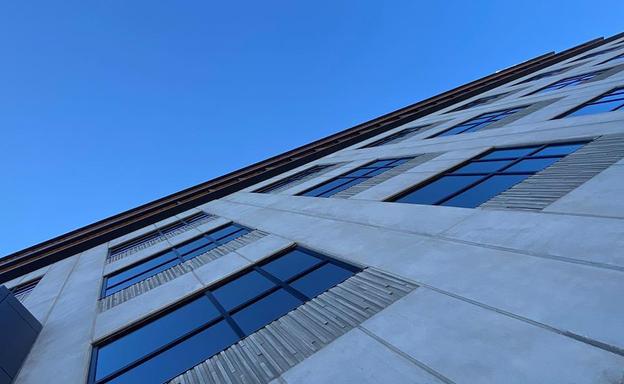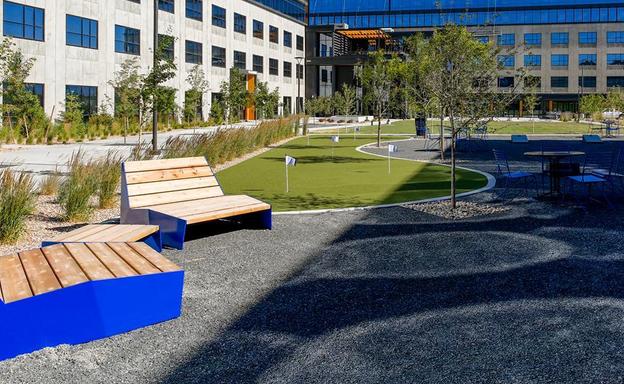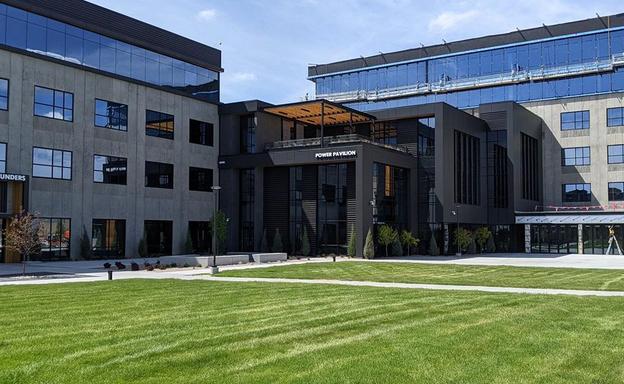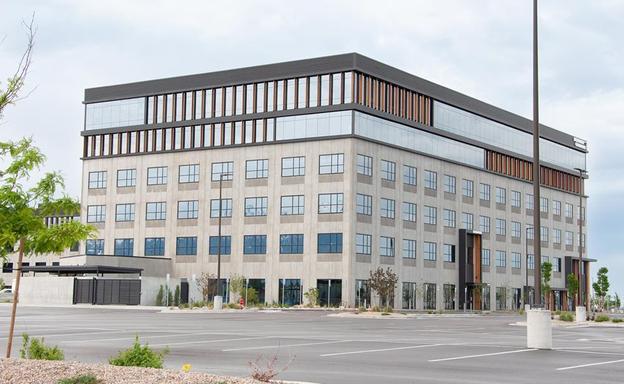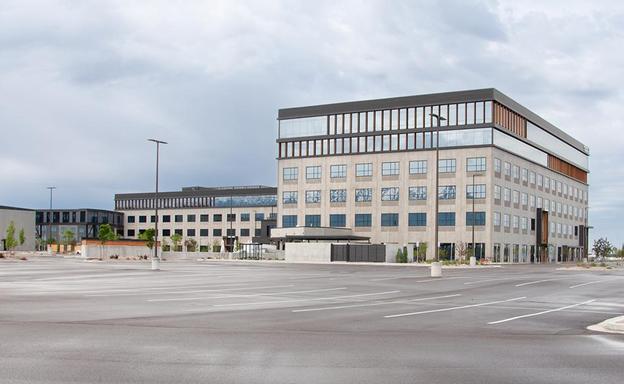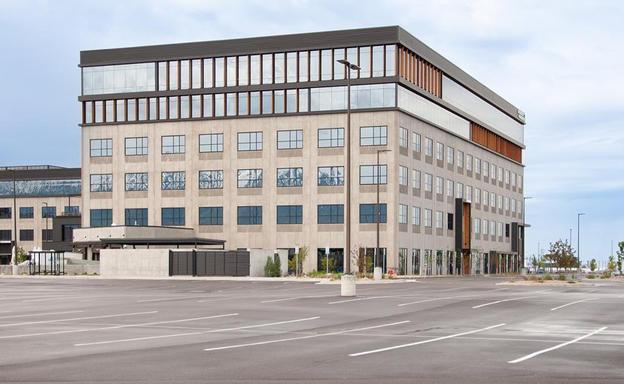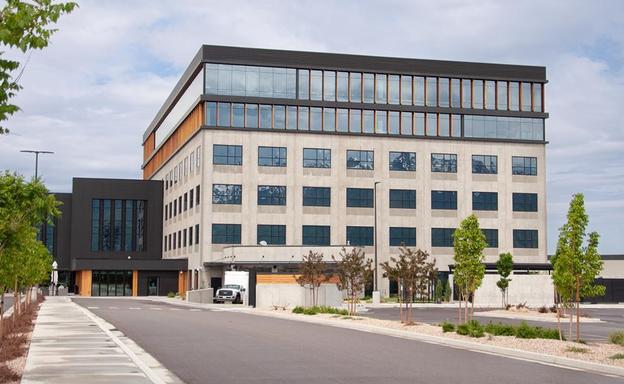Roy Innovation Center Building 4
Summarize the project's program, features, and achievements: The Roy Innovation Center (RIC) is located at Hill Air Force Base (HAFB) in Utah. Designed for a defense contractor, the need for high security required close collaboration between HAFB, architects, engineers, and construction teams. In designing building four to accompany the other buildings on the campus, the goal was to reflect the principles and values of the tenant occupying them. Being located on the base, each building was designed to incorporate classic aspects of the aviation industry. Building four is the tallest on the campus with two stories on top of four stories of tilt-up concrete and is the newest addition on a campus of 65 acres. Tilt-up concrete panels allowed an expedited schedule while keeping the secure campus cost efficient. A natural concrete finish was used instead of paint or stain, which could easily make this project an unforgiving building among the rocky Wasatch Mountains that serve as a backdrop. The panelized nature of tilt-up construction enabled variation to be achieved by adding unconventional locations of control joints and board-framed sections. These visual aspects help tell a story of aircraft craftsmanship. Roy Innovation Center Building Four is the finishing touch to a beautiful and functional campus.
What obstacles were overcome related to the schedule, budget, program, specification, site, etc. on this project? Being located on HAFB, the site of the project needed to be cleared of asbestos, explosives residue, steam lines and tanks, with an abundance of existing utilities needing relocation. This required a specialty demolition contractor to clear and properly prep the site to ensure safety. The increased security and classified nature of the client created interesting pressures on the construction and engineering teams while they were working on the project. The base perimeter at HAFB also made logistics difficult for contractors, staff, and materials to pass security checks. To mitigate this, HAFB then relocated the base’s fence perimeter to just outside the work site lines which was critical to the success of meeting deadlines. Unsurprisingly, the COVID-19 Pandemic created unprecedented obstacles to overcome. Issues concerning illness, social distancing, and the slow-down of the supply chain created opportunities for problem solving. One example of supply chain issues is in situations calling for a specific size of studs, materials of lesser gauge were used, doubling their spacing to ensure proper structural integrity. Another challenge that the teams carefully coordinated was the need to tie building four into building 3A while addressing fire separations, expansions, and still maintaining a clear, cohesive connection between the facilities. This was done to maintain a walkable campus throughout the entire facility.
Please communicate any engineering complexities or unique features of the panel design for this project. ? When investigating structural systems compatible with the fast-paced construction, tilt-up quickly became the frontrunning system. Located in an area of high seismicity along a nearby fault, the concrete tilt-up panels were utilized not only for the gravity support of the building, but also for the earthquake level forces and detailing. All tilt-up panels on this building as well as the other buildings on the campus were designed and detailed as special reinforced concrete shear walls, with reinforced coupling beams. The tilt-up panels were designed to limit the seismic drifts of the building to within code limits while providing sufficient entry points for natural light. Sufficient reinforcement in the tilt panel legs were designed to meet the amplified seismic forces required by code while also providing the necessary confinement required in areas of high seismicity. The use of tilt-up panels to resist both the gravity and lateral loads provided an economical and efficient use of time and resources, both of which were crucial to the success of the project.
What is the potential for this project's impact on the community and/or environment? The Roy Innovation Center will bring many new jobs to Utah. Projections indicate that 5,000 new jobs will be available in the Roy and Riverdale area. Of those 5,000 openings, 2,500 will be high-skill, high-paying positions. This increase in employment will also bring increased tax revenues to the surrounding communities. In addition to the economic boost in Utah, this new building on campus will allow the defense contractor to continue to work closely with the nation’s armed forces for protection of the country.
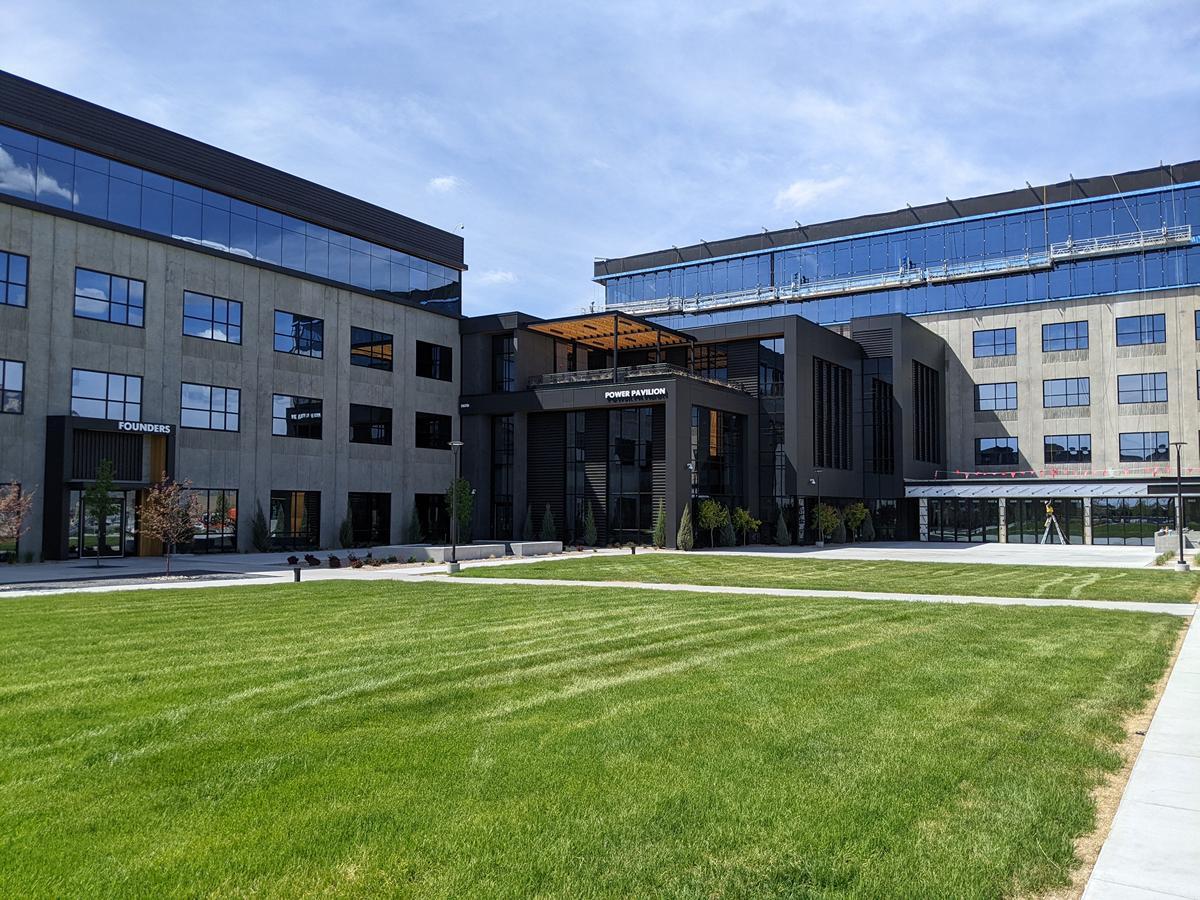
Project Location
Roy, UT 84067
United States
TILT-UP ACHIEVEMENT AWARD
The Tilt-Up Achievement Awards were established to honor projects that use site-cast tilt-up concrete to introduce new building types, advance industry technology and provide unique solutions to building programs. Winning entries illustrate the variety, beauty, and flexibility of tilt-up construction.
ACHIEVEMENT
2023
The world’s greatest tilt-up structures are featured by the TCA as Tilt-Up Achievement Award Winners. Learn more >
Project Images
Project Team (TCA Members)
- Developer/Owner:
- General Contractor:
- Rogers-OBrien Construction
- Concrete Contractor:
- Rogers-OBrien Construction
- Phaze Concrete, Inc.
- Architect:
- Engineer:
- Dunn Associates
- Suppliers:
- Photographer(s):
- Architectural Nexus
- Kylee Ericksen
Project Specifics
- Project Category:
- Office
- Building Types:
- Office
- Finishes:
- Concrete (Raw/Sealed)
- Stain
- Features:
- Formliner
- Reveals
- Insulation:
- Post Applied (Interior)
- Environmental:
- Number of Floors:
- 6
- Tilt-Up Wall Area:
- 33,250 sq ft (3,089 sq m)
- Total Floor Area:
- 180,000 sq ft (16,722 sq m)
- Project Footprint:
- 30,000 sq ft (2,787 sq m)
- Tallest Panel:
- 65 ft 1 in (19.84 m)
- Widest Panel:
- 26 ft 5 in (8.05 m)
- Largest Panel:
- 1,000 sq ft (92.9 sq m)
- Heaviest Panel:
- 140,500 lbs (63,730 kg)
